- Polaris Stargate Newsletter
- Posts
- THE SRI YANTRA
THE SRI YANTRA
A CHARIOT WHICH DELIVERS INSIGHTS INTO THE ESSSENCE OF BEING.
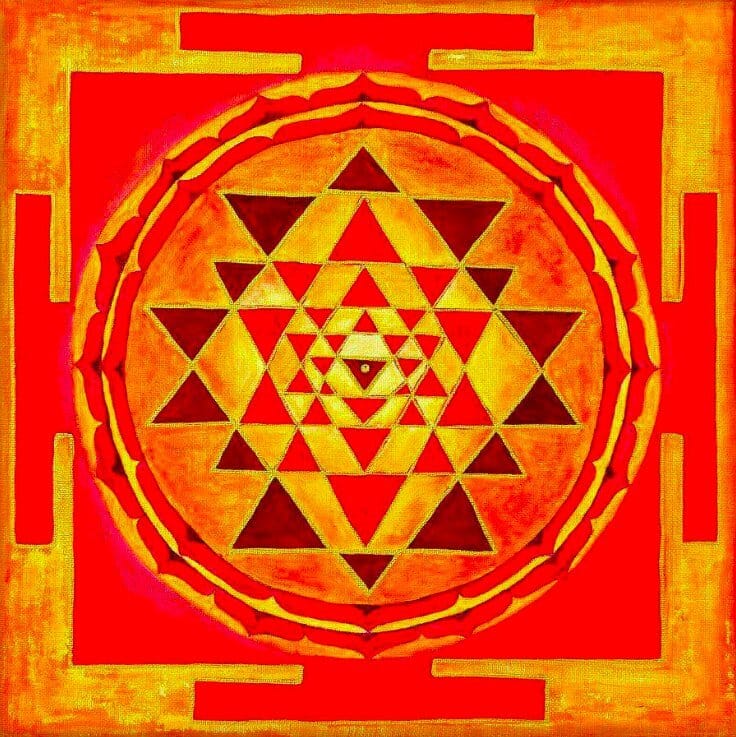
Hey there, stargazer,
The Sri Yantra (also called Shri Yantra or Sri Chakra) is one of the most revered and complex sacred geometric diagrams in Hindu Tantra. It symbolizes the union of divine masculine (Shiva) and feminine (Shakti) energies, the cosmos, and the journey of consciousness from material existence to enlightenment.

Structure of the Sri Yantra The Sri Yantra is composed of nine interlocking triangles, surrounded by concentric circles, lotus petals, and a square enclosure. Each layer holds profound symbolic meaning:
The Nine Triangles Five Downward-Pointing Triangles: Represent Shakti (feminine energy, creation, dynamism).
Four Upward-Pointing Triangles: Represent Shiva (masculine energy, stillness, dissolution).
Interlaced Geometry: The 9 triangles form 43 smaller triangles, symbolizing the interconnectedness of all existence. The central triangle (often red) houses the Bindu (dot), the primordial source of creation.
Concentric Layers Bindu: The central point, the unmanifest source of the universe, pure consciousness.
Triangular Matrix: The 9 triangles radiate outward, mapping the evolution of the cosmos.
Two Lotus Circles:
14-Petaled Lotus: Represents the 14 Nityas (eternal principles) or states of consciousness.
8-Petaled Lotus: Symbolizes the 8 Matrikas (divine mothers) or aspects of Shakti.
Bhupura (Square with Gates): The outer square with four gates represents the earthly realm, bounded by the four directions and four human goals (purusharthas: dharma, artha, kama, moksha).
Symbolism and Cosmic Meaning Union of Opposites: The merging of Shiva and Shakti triangles signifies the harmony of male/female, spirit/matter, and creation/destruction.
Cosmic Manifestation: The Sri Yantra maps the journey from the unmanifest (Bindu) to the material world (Bhupura), mirroring the Hindu concept of Brahmanda (cosmic egg).
Chakras and Consciousness: The layers correspond to the body’s chakras, with the Bindu as the Sahasrara (crown chakra) and the Bhupura as the Muladhara (root chakra). Meditating on it awakens Kundalini energy.
Meru Yantra: A 3D version of the Sri Yantra, resembling a mountain, represents the ascent to spiritual peaks.
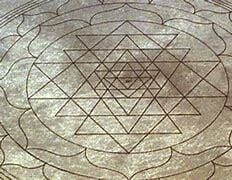
Origins and Historical Roots The Sri Yantra’s origins are ancient and shrouded in mystical lore:
Vedic and Tantric Roots: While not explicitly mentioned in the Vedas, it arises from Tantric traditions (5th–9th century CE) that sought to unify Vedic and non-Vedic practices. Key texts include:
Tantraraja Tantra and Yogini Hridaya: Describe its construction and spiritual significance.
Saundarya Lahari: A hymn by Adi Shankaracharya (8th century CE) links the Sri Yantra to the goddess Tripura Sundari (Beauty of the Three Worlds).
Legend of Its Creation: It’s said the Sri Yantra was revealed to sages in deep meditation as a visual form of the primordial sound Om.
Archaeological Evidence: Sri Yantra carvings appear in temples like the 10th-century Brihadeeswarar Temple (India), though its exact origin remains debated.
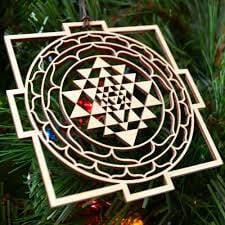
Purpose and Spiritual Applications Meditation: Focusing on the Sri Yantra stills the mind, guiding practitioners to transcend duality and realize oneness (Advaita).
Manifestation: Used in rituals to attract abundance, wisdom, and protection.
Tantric Worship: Central to Shri Vidya, a goddess-centered Tantric tradition. Devotees worship Tripura Sundari through the yantra.
Sacred Geometry: Represents the universe’s mathematical perfection, inspiring scientists and philosophers.
The Sri Yantra’s "Multi-Dimensional" Nature The Sri Yantra operates on multiple planes:
Physical: A 2D/3D diagram for rituals.
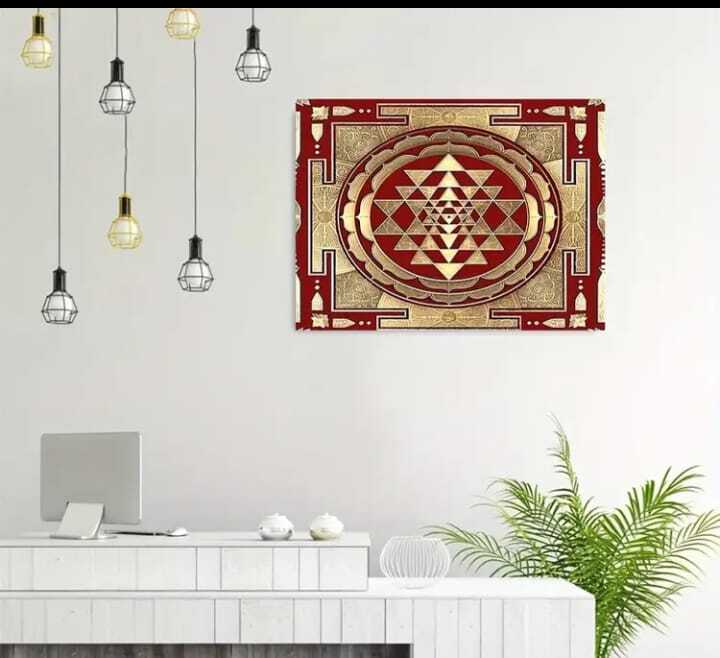
Energetic: Channels subtle energy (prana) through its geometry.
Cosmological: Maps macrocosmic (universe) and microcosmic (human body) realms.
Psychological: Reflects the mind’s journey from fragmentation (outer layers) to unity (Bindu).
Controversies and Mysteries Precision in Drawing: Even a minor error in symmetry is believed to disrupt its energy. Legends say flawed yantras caused disasters for kings.
Western Misuse: Often commercialized as art without understanding its sacred context.
Meru vs. Flat Yantra: The 3D Meru Yantra is considered more potent but requires advanced spiritual preparation to use.
Modern Relevance Spiritual Practice: Used in yoga studios and meditation centers worldwide.
Scientific Fascination: Mathematicians study its fractal-like patterns and "perfect" proportions.
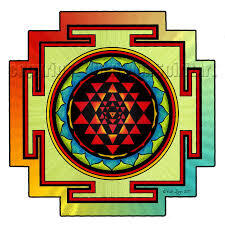
Symbol of Unity: Embraced by interfaith movements as a universal emblem of harmony.
How to Engage with the Sri Yantra Meditation: Gaze softly at the center (Bindu) to quiet the mind.
Rituals: Place it on an altar, offer flowers, and chant associated mantras (e.g., Om Aim Hrim Klim Chamundaye Viche).
Respect: Approach it with reverence—avoid casual use unless initiated into its traditions.

Conclusion
The Sri Yantra is far more than a geometric image—it’s a cosmic blueprint, a spiritual roadmap, and a living energy field. Whether you engage with it as a sacred tool, a meditative focus, or a mathematical marvel, its layers invite endless exploration. As the Tantraraja Tantra says:
"The Sri Yantra is the body of the Goddess, the universe, and the soul. To know it is to know all." 🌟